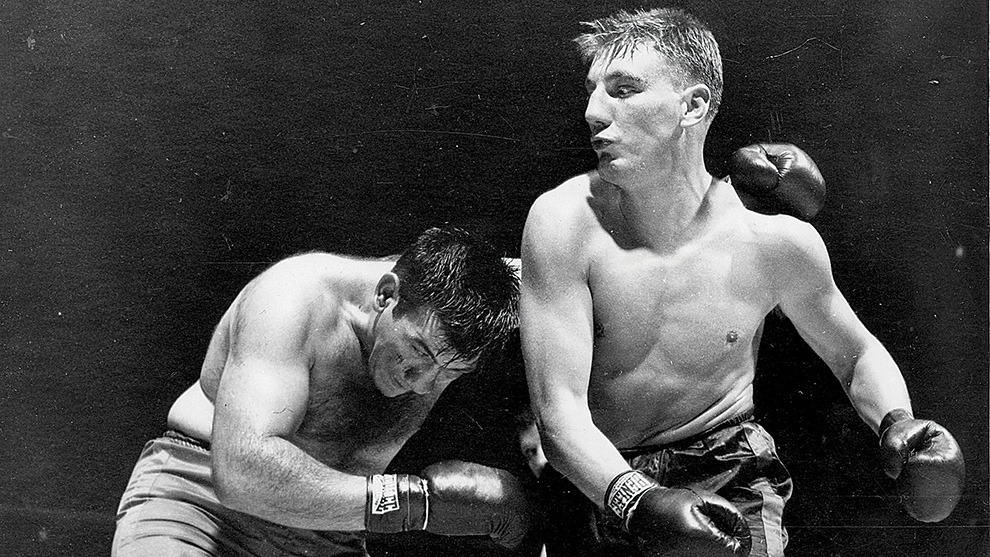From making his debut at Winsford, to boxing in the Myrtle Street Drill Hall in Crewe, to then making five appearances at Madison Square Garden in the early 1950s was quite a journey for heavyweight Ray Wilding of Northwich, Cheshire. At the time he boxed at this world-famous arena the place was at the height of its fame, with the likes of Sugar Ray Robinson, Rocky Marciano and Sandy Saddler appearing there regularly.
Few remember Ray Wilding today, but when he left these shores in early 1951 to make his fame and fortune in the States he did so with a fearsome reputation as a big puncher, and much was expected of him.
He turned pro in 1947, aged 18, boxing on the many small hall shows that took place in and around Cheshire and North Wales. Some of his early contests are hard to trace but he won most of them by clean knockout and by early 1950 he was knocking at the door of the British heavyweight top 10 rankings. After winning a heavyweight tournament at Watford Town Hall he started to appear regularly on shows at the Royal Albert Hall, Earl’s Court at Belle Vue, Manchester.
In June 1950 Ray was taken on as a sparring partner by Lee Savold, who was in the UK to fight Bruce Woodcock for a version of the world heavyweight title. The American damaged his jaw during their hard sessions in the gym. While in Warrington Infirmary for treatment, Wilding received a visit from a grateful Savold, who encouraged him to go to America where, he reckoned, Ray could hit the big time.
Nine months later and Ray was standing across the ring from Nash Karahan, ready to box in a six-rounder on the undercard of the Bob Murphy v Harry Matthews heavyweight clash at the famous Garden. When he left the UK, he had won his last six fights inside the distance and had only lost two contests from his 35 pro bouts, both due to a damaged nose. He continued this form in the States, where, after crushing Karahan in two rounds, he won five more inside the distance. His fifth contest there, a fourth-round stoppage of Jimmy Russo, took place on the undercard of Savold’s unsuccessful contest against Joe Louis, again at the Garden.
Wilding returned to the UK in November 1951 to fight Stephane Olek in a 10-rounder at Harringay Arena, and the two men were thrown out in the fifth for not trying. After beating Rocky Brown at the Convention Hall, Philadelphia, Ray then hopped back across the Atlantic once again to take on Frank Bell for the Central Area heavyweight crown at Harringay. He did a proper job on Bell with BN reporting that “Wilding set about Bell in the eighth with a vengeance. Frank went down for ‘eight’ after taking a succession of blows to the jaw and suffered an unmerciful beating thereafter, although showing amazing gameness. He lurched to his corner at the bell and his trainer wasted no time in telling the referee that his man had taken enough for one night. It was a great victory for Wilding.”
This victory earned Wilding a contest with Werner Weigand on the undercard of the Don Cockell v Randolph Turpin contest at the White City in June 1952. Unfortunately, Weigand cried off and a late substitute was found in Aaron Wilson, an American heavyweight who had knocked out Jack London and Don Cockell in previous bouts in London. Wilson shocked everyone by dispatching Ray in only three rounds.
With his bubble burst, Wilding went back to America, where he fought four more times during 1953, losing to Charlie Norkus by two-round stoppage in a contest that finally put paid to his hopes. He settled over there and ran a successful business with his son. For a short while he looked like a world-beater.
